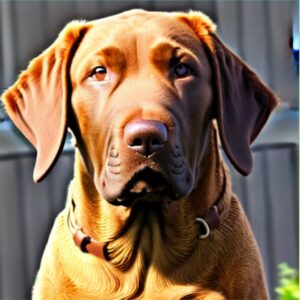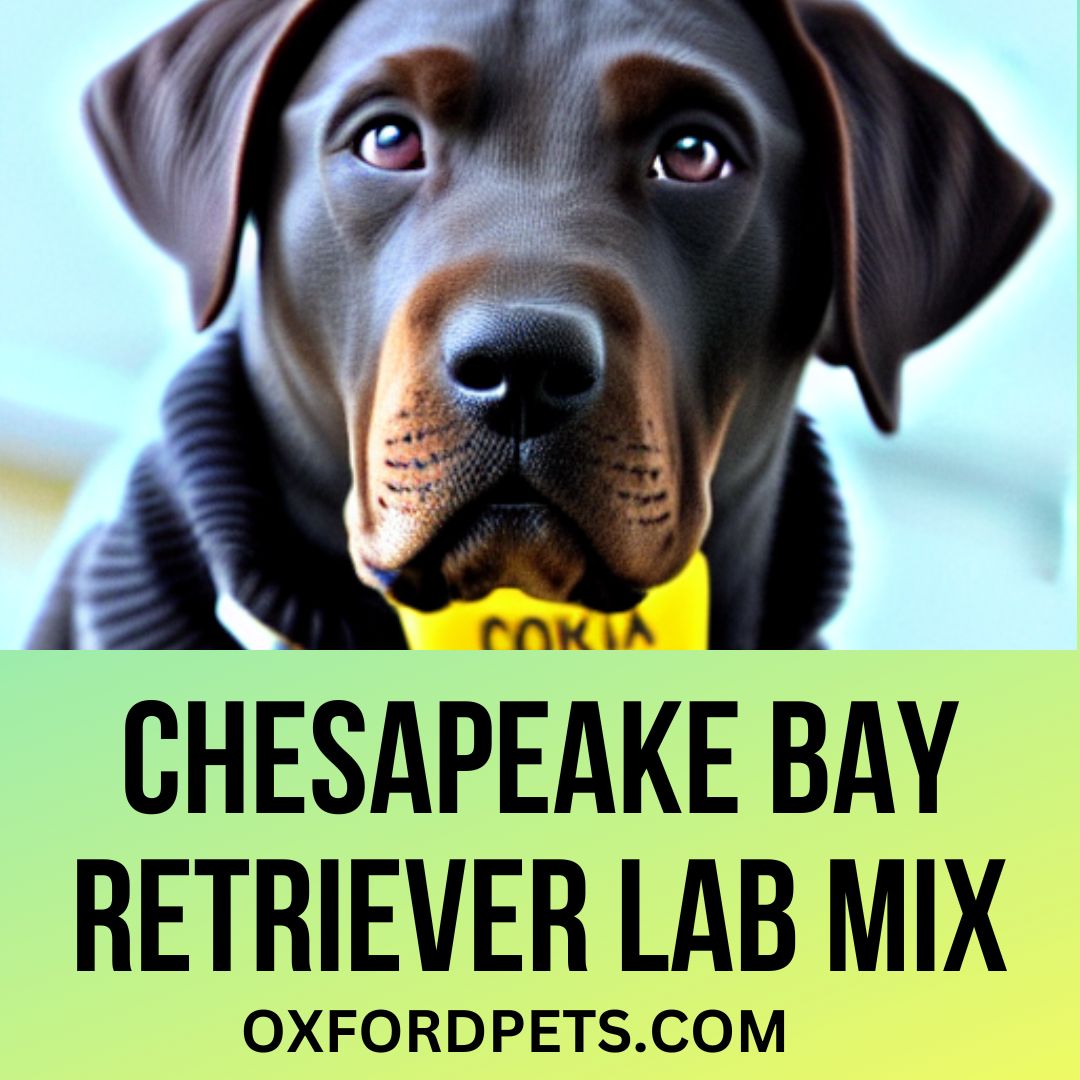Mix breeding has lately been a popular practice amongst dog breeders and dog enthusiasts. One of the common cross breeds that are gaining immense popularity these days is Chesador.
A crossbreed between Chesapeake Bay Retriever & Labrador Retriever, Chesador is one of the excellent large dogs. This crossbreed gives birth to an excellent hunting dog, a dream for many. Breeders choose Chesapeake Bay Retriever & Labrador Retriever because they combine the best attributes, resulting in one of the most loved canines.
Wondering if a Chesapeake Bay Retriever & Labrador Retriever mix is right for your home? Come, let’s find out.
Contents
Chesador- A Chesapeake Bay Retriever & Labrador Retriever Mix
Chesador is a large muscular dog that makes an excellent watchdog or a sports dog. This intelligent dog breed loves spending time with family, but at the same time, they are extremely outgoing. An active family who is on their toe for most time of the day can opt for Chesador as a pet. However, Chesadors aren’t the right pick for lazy and less active families or those with apartment lifestyles.

Chesador Breed History and Origin
Chesador is a designer dog breed. This designer dog breed’s heritage goes back to its parent breeds, Chesapeake Bay Retriever & Labrador Retriever. The origin of the Chesapeake Bay Retriever dates back to 1807 in Maryland. At the same time, the origin of the Labrador Retriever goes back to 1800s Newfoundland, which is now Canada. But what’s with the origin of these parent breeds?
Well, Chesapeake Bay Retriever is in itself a crossbreed. It was back in the early 1800s when two pups were rescued from a sinking ship in Maryland. Both the dogs were taken back into local families, and upon breeding them together, the first Chesapeake Bay Retriever was found. Labradors, though, on the other hand, are purebred dogs from further north than their Maryland counterparts.
The exact time and place of Chesador’s origin are not very popularly known, but it is estimated that they were bred sometime in the 1800s.
Chesador Size and Appearance
Chesador is a medium to large size dog known for its strong muscular build. Chesador appears more like a Labrador Retriever, but at the same time, they also possess all the excellent traits of a Chesapeake Bay Retriever.
A Chesador, in its adult form, grows 20 to 27 inches tall and can weigh anywhere between 50 to 80 pounds. Chesadors have broad heads, wide muzzles, and strong, thick necks. Their well-defined legs support the solid muscular body. Chesador is blessed with webbed feet, which also makes them an excellent swimming dog. Their eyes are generally brown or hazel, whereas they have medium size floppy ears.
Chesador Coat and Color
Chesadors, a Chesapeake Bay Retriever & Labrador Retriever Mix, these dogs have a moderately thick coat. In length, their coat remains medium to moderately long, just like that of Labradors. Chesador inherits a waterproof coat from their Labrador parent, and that’s another factor contributing to their swimming talent. For increasing circulation and preventing excessive shedding, it is important to brush their coat at least twice or thrice daily. Brushing also maintains the shine and silkiness of their coat.
Chesador’s coat comes in a variety of colors ranging from Chocolate, Black, Yellow, Light, Tan, Brown, Deadgrass, and Sedge.
Chesador Temperament
All thanks to their Labrador DNA, Chesador makes excellent family dogs. Their easygoing, loving, and laid-back attitude makes them comfortable with different types of families. Traits like protective, dominant, loyal, playful, responsive, cheerfulness, and affection perfectly define a Cheador’s temperament.
Chesador, indeed, is one of the brightest dog breeds, and there’s no limit to their creativity. When it comes to intelligence ranking, they are undoubtedly one of the best breeds. This crossbreed is generally very calm, but it might grow as aggressive if not socialized well.
Chesadors are family dogs, and they love getting loads of attention. They like to be a part of a family and loves to be included in family gatherings and outing.
Chesador Exercise Needs
Chesadors are highly active dogs, and they need regular exercise. Allowing them plenty of strenuous activity is important to prevent boredom and keep their fitness intact. Chesadors are generally loving and calm, but if their energy isn’t burned well, they can turn aggressive and destructive.
Chesadors enjoy going for a walk, running, playing a game of fetch, swimming, and hiking trips. A schedule of daily 1 hour to 90 minutes of exercise is a must for them.
Chesador Health
Chesador is a healthy breed, but like any other dog, they can also suffer from a few health issues. Some of the genetic and environmentally triggered health problems that often hit the Chesador breed includes,
- Bloat
- Cerebellar Abiotrophy
- Progressive retinal atrophy (PRA)
- Acute Moist Dermatitis
- Ear Infections
- Elbow Dysplasia
- Epilepsy
- Myopathy
- Osteochondrosis Dissecans
- Tricuspid Valve Dysplasia
- CataractsCold Tail
- Hip Dysplasia
However, by maintaining a healthy and balanced lifestyle, dog owners can avoid these problems for their pets. In addition, it is advisable to take Chesador for a vet checkup once or twice yearly, even if the dog is perfectly healthy.
Chesador Lifespan
Chesadors have an average lifespan of 10 to 14 years.
Chesador Price
Chesador is definitely an expensive dog breed, but since most crossbreeds are pricey, it is justifiable.
A Chesador dog would range anywhere between $800 to $1500. The price may depend upon the dog’s age, gender, size, color, special abilities, breeder, and area.
Little-Known Facts About the Chesador
- Chesadors are excellent swimmers. They inherit this ability from their purebred parent, Labrador Retriever.
- Both parents of Chesador (Chesapeake Bay Retriever and Labrador Retriever) are extremely popular in the U.S. However, the Chesapeake Bay Retriever’s origin (from which parents) is still unknown.
- Chesadors have a high metabolism, and they love to eat. If not stopped, they can eat a little too much.
- Just like their purebred parent Labrador Retrievers, Chesadors, too, aren’t hypoallergenic. They, in fact, shed a lot.
- Chesador makes excellent family dogs and is appropriate to be kept with kids and senior adults.
- Chesadors get along exceptionally well with other dog breeds, cats, and small household pets. They make a good add-on for a multi-pet household.
- Chesadors are quick learners who are always curious about learning new tricks.
- Chesadors also make good disability assistance dogs or registered therapy dogs.
Wrapping up…
This was all about Chesapeake Bay Retriever Lab Mix, the Chesador. If you are looking for an excellent hunting companion and a bosom buddy, look no further than Chesador. These dogs will make your home and life truly enjoyable and add that entertainment quotient to it. And all they will ask in return is love, care, affection, and a lot of physical exercises.
